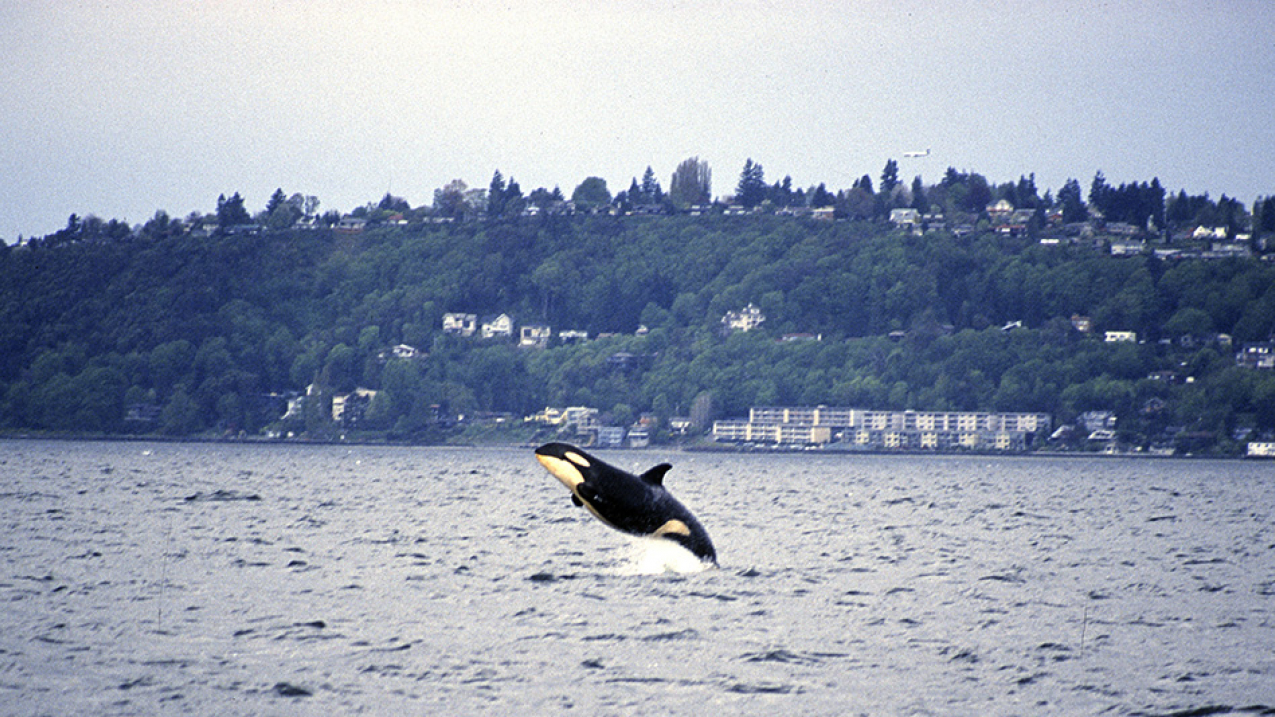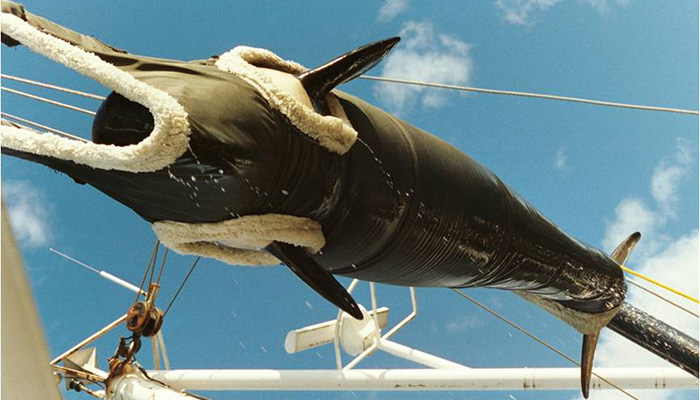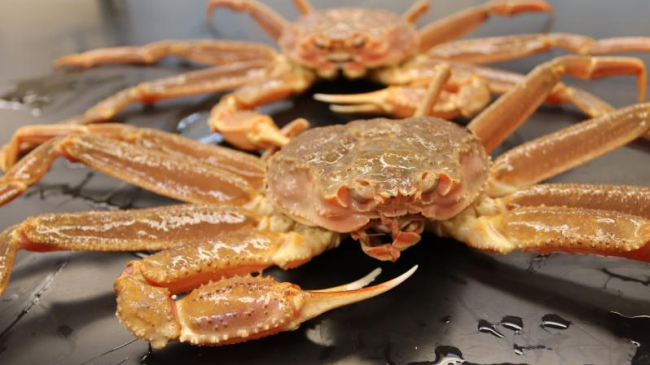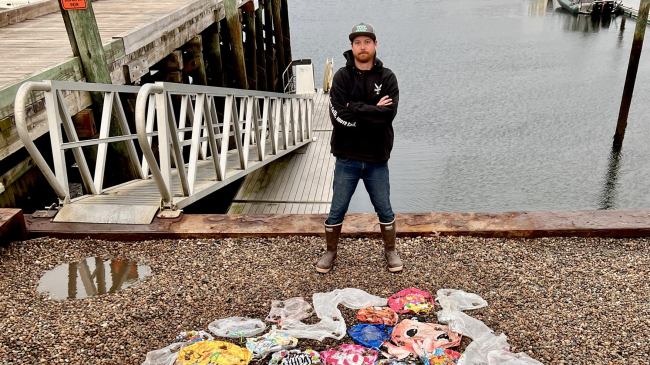The second of a three-part series
Fifteen years ago this summer, the Northwest joined forces to orchestrate the unprecedented rescue of a wild killer whale calf. The effort built trust, partnerships, and goodwill that continue to contribute to killer whale recovery today. We tell the story of Springer in three parts. We continue with Part Two.

Springer leaps from the water near Vashon Island in 2002 before the wayward calf was captured and returned home near the north end of Vancouver Island in British Columbia. (Image credit: Courtesy of Mark Sears)
Springer came from the population of killer whales known as the Northern Residents that roam the waters around the north end of Vancouver Island and southeast Alaska. In the spring of 2002, at about two years old, she appeared alone in Puget Sound and soon began following boats and frequenting areas around ferry docks.
“She was becoming habituated to humans, and there were increasing signs this was a creature in distress,” recalled Bob Lohn, then regional administrator of NOAA Fisheries in the Northwest. “It became clear that we would have to do some kind of intervention or she would likely die.”
NOAA Fisheries and Canada’s Department of Fisheries and Oceans consulted a range of scientists and experts for advice, and held meetings to ask the public for input on how best to proceed.
Springer’s best interests
Some critics of the rescue mission remembered the capture of killer whales in Puget Sound in the early 1970s for aquarium shows, and they feared Springer would end up in the same place. Brent Norberg, then Northwest stranding coordinator for NOAA Fisheries, realized that to save Springer, the agency had to also earn the public’s trust.
“I said to our team, ‘We cannot unilaterally make this decision,’” Norberg recalled. “If we go forward, we had to actively engage not only the whale community, but also the broader public. We had to demonstrate that our concern was for the best interests of the animal.”
The effort to save Springer brought together people and organizations who had never worked together before. NOAA Fisheries invited outside organizations to join conference calls discussing plans for the capture.

“NOAA Fisheries went to the community instead of vice versa,” said Donna Sandstrom, a longtime whale advocate. “They asked what we thought, and they really listened. It all worked out, and I think that was a big reason why. We decided to trust each other and take the risk together.”
Making the call: Do we or don’t we?
By this time, Springer’s story was attracting national media attention. Television networks followed every move. At one point NOAA Fisheries had to ask the Federal Aviation Administration to declare a no-fly zone over the young killer whale to control the media helicopter traffic.
One day NOAA’s Bob Lohn opened a manila envelope in his office to reveal a crayon drawing of Springer with a note that said, “Mr. Lohn, please save this whale.”
The drawing highlighted the intense interest surrounding the young whale. As Lohn saw it at the time, the choice was to either sit back and let Springer die, or take a chance and try to save the whale, something no one had done before.
“In this case, NOAA Fisheries led the action, but we wanted to include everyone who was willing to help,” Lohn said. “There was a lot of interest but not agreement on next steps, so we took the initiative and invited others to join us. We really did not know how this was going to end up.”
This article is the second of a three-part series. Part One was published earlier this week. Stay tuned for Part Three tomorrow.



